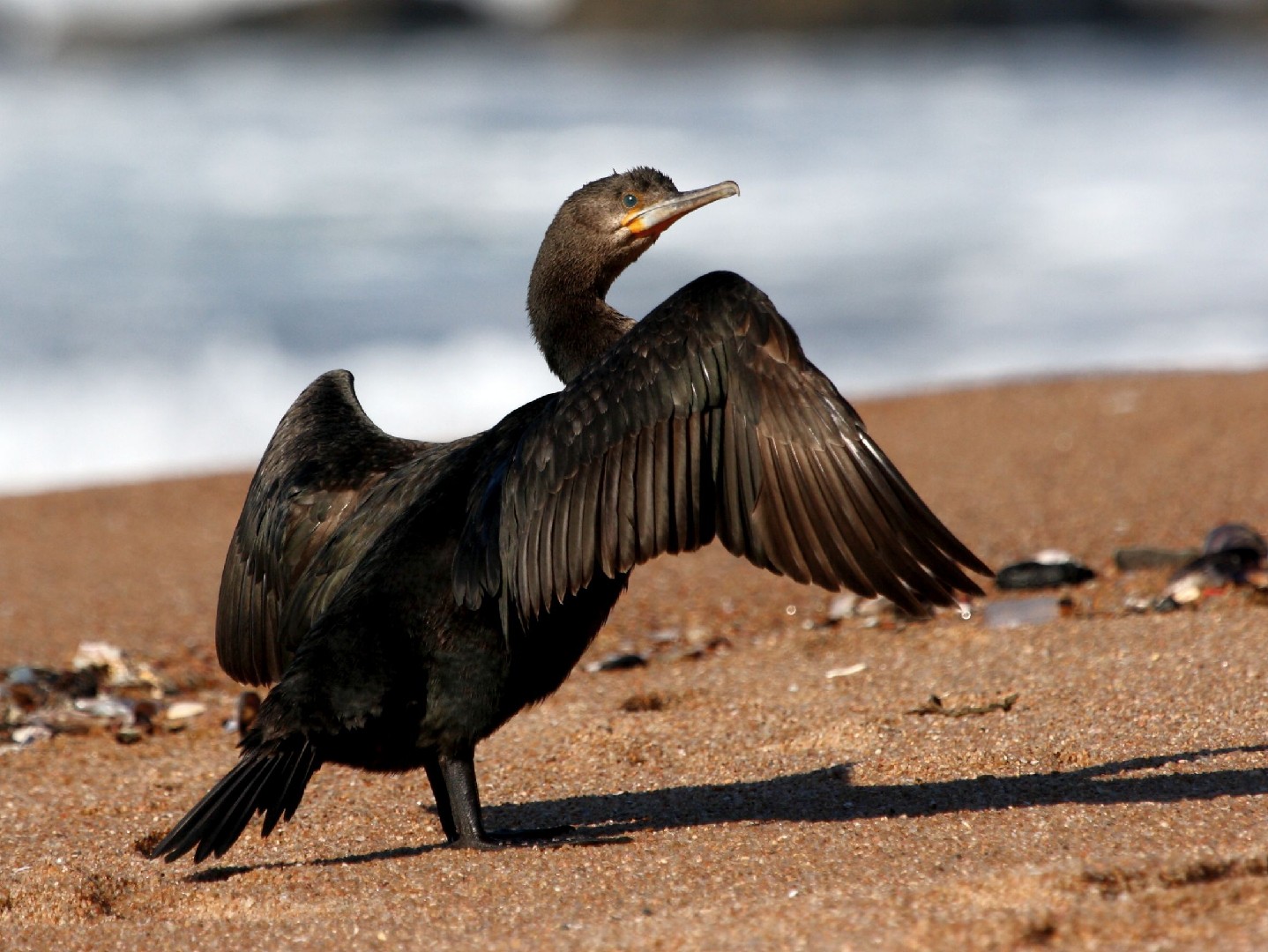Cape Cormorant
A species of Typical Cormorants and Shags Scientific name : Phalacrocorax capensis Genus : Typical Cormorants and Shags
Cape Cormorant, A species of Typical Cormorants and Shags
Botanical name: Phalacrocorax capensis
Genus: Typical Cormorants and Shags
Content
Description General Info
 Photo By Alandmanson , used under CC-BY-SA-4.0 /Cropped and compressed from original
Photo By Alandmanson , used under CC-BY-SA-4.0 /Cropped and compressed from original Description
The Cape cormorant or Cape shag (Phalacrocorax capensis) is a bird endemic to the southwestern coasts of Africa. It breeds from Namibia south to southern Western Cape. In the nonbreeding season, it may be found as far north as the mouth of the Congo, and also extends up the east coast of South Africa as far as Mozambique. In the 1970s, the breeding population was estimated as over 1 million in Namibia alone. However, the IUCN now classifies it as "Endangered" due to a very rapid decline in the population over the last three generations. The Cape cormorant is an almost entirely glossy black bird, though in breeding condition it has a purplish tinge and a few white plumes on head, neck, and cloacal areas. Its gular skin is a deep orangey yellow; unusually for a cormorant, its lores are feathered. The bird's wing is about 240–280 mm in extent, and it weighs 800–1600 grams, with little sexual dimorphism. Cape shags commonly forage in flocks, taking schooling fish from mid-water, such as pilchards, anchovies, and sand eels. Its prey are typically much smaller than those of the sympatric bank cormorant. Their major predators are black-backed jackals, which take the occasional adult while it is roosting, and nest-site predators such as great cormorants, eastern great white pelicans, and kelp gulls. Like a number of other related cormorant species, the Cape cormorant is placed by some authorities (e.g. Johnsgaard) in the genus Leucocarbo. 
Size
64 cm
Colors
Black
Yellow
White
Orange
Purple
Nest Placement
Cliff
Feeding Habits
Cape Cormorant predominantly feed on small schooling fish including pilchards, anchovies, and sand eels, often foraging in flocks. They exhibit mid-water hunting techniques distinct from other sympatric cormorants.
Habitat
The cape Cormorant is a marine bird species predominantly occupying coastal regions, favoring environments such as estuaries, coastal lagoons, and islands situated in wetlands or open beaches with ample visibility. These birds are intimately linked to the frigid waters of the Benguela Current, generally staying within 10 km of the shore. The cape Cormorant usually nests on offshore islands and along the mainland coast, preferring cliffs and man-made structures, including guano-collection platforms, breakwaters, and occasionally derelict buildings or even moored boats.
Dite type
Piscivorous
General Info
Feeding Habits
Bird food type
Species Status
ENDANGERED. Formerlly considered Near Threatened.